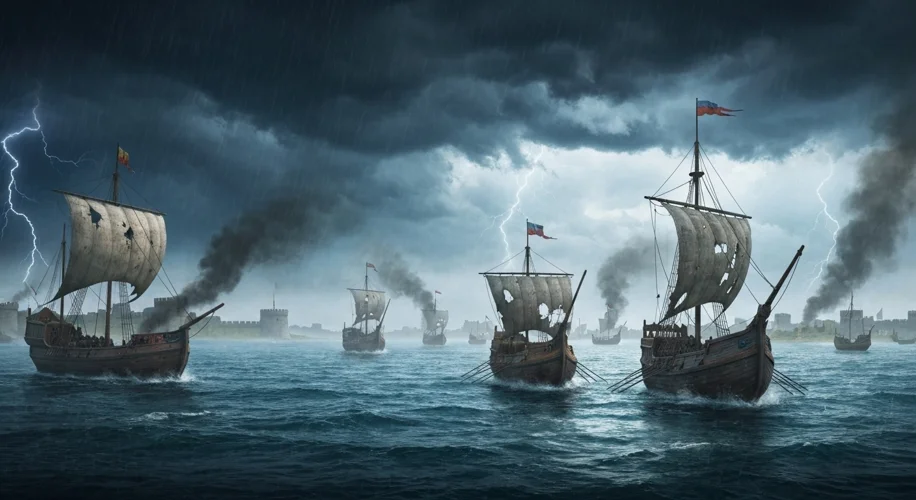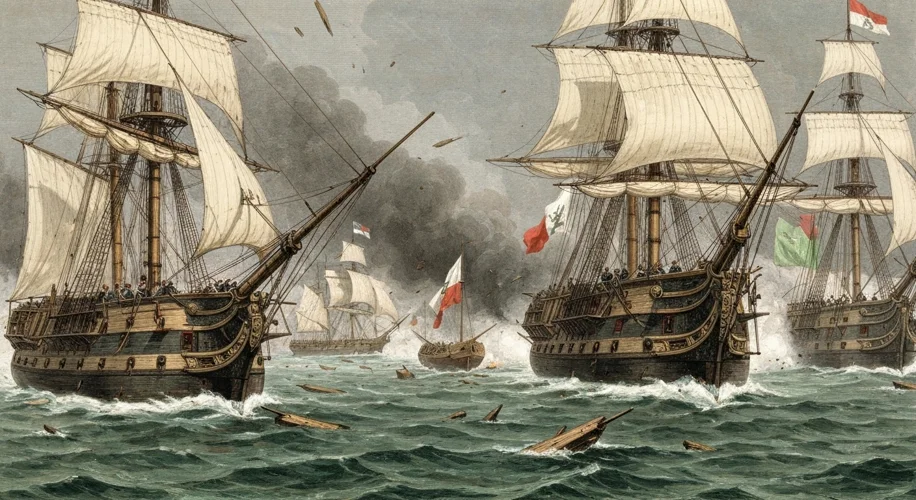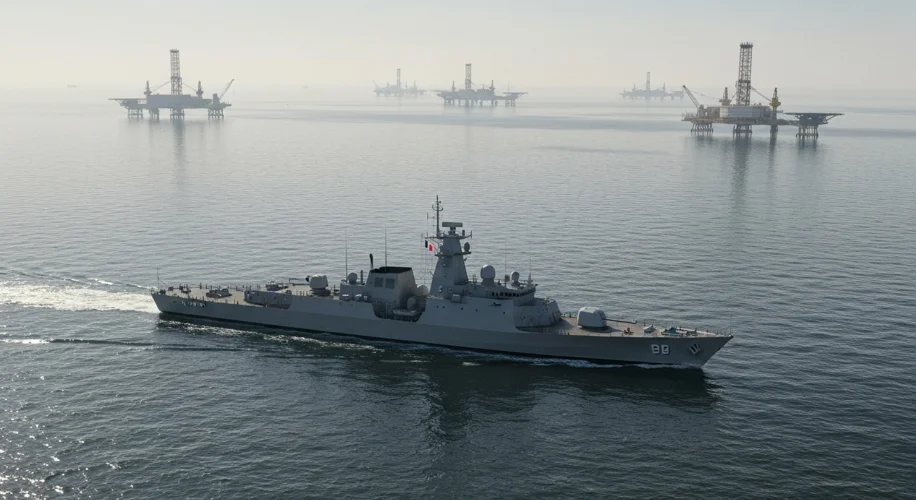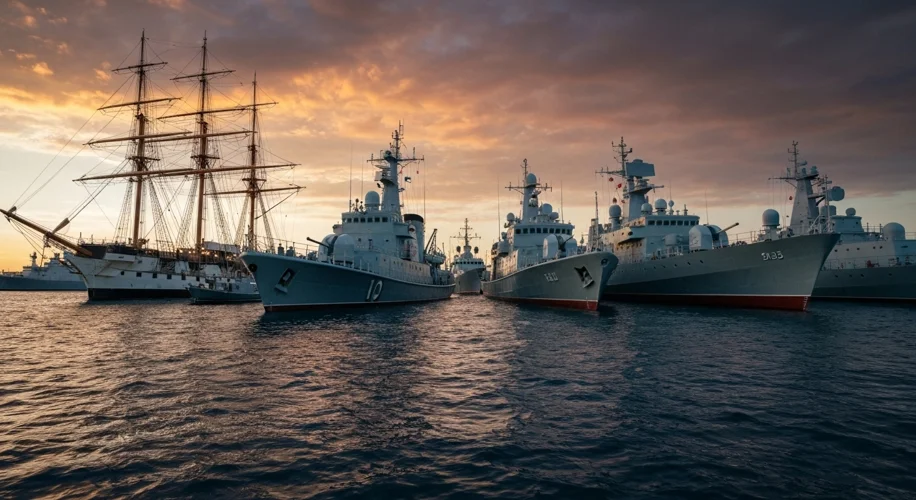The Caspian Sea, a vast inland expanse often mistaken for a lake, has been a silent witness to centuries of strategic maneuvering, fierce naval skirmishes, and the ebb and flow of empires. Its waters, rich with resources and strategically positioned between Europe and Asia, have long been a prize coveted by regional powers, shaping histories and defining destinies.
From the earliest days of settled civilization, the Caspian’s potential was recognized. Ancient peoples navigated its shores, utilizing its bounty and establishing trade routes that crisscrossed its waters. The very name, “Caspian,” is believed to derive from the fearsome Caspi people who inhabited its western shores in antiquity. Early naval activity was often limited to smaller craft, used for fishing, localized trade, and defense against raiders. Yet, even these humble beginnings hinted at the sea’s future significance.
The true dawn of significant naval engagement in the Caspian arrived with the rise of powerful empires and the relentless drive for control over vital trade routes and resources. The Golden Horde, a successor state to the Mongol Empire, exerted considerable influence over the Caspian region in the 13th and 14th centuries. Their presence brought a measure of stability, facilitating trade across the vast Eurasian steppes, and their fleets, though often modest by later standards, were crucial for maintaining control over the sea’s northern reaches.

However, it was the burgeoning power of Russia that would truly transform the Caspian into a strategic naval theater. Peter the Great, driven by his ambition to modernize Russia and secure access to southern trade routes, initiated a concerted effort to build a powerful Caspian fleet in the early 18th century. Following his campaigns against the Safavid Persian Empire, Russia gained a dominant position. Russian naval bases were established, and the Caspian Flotilla, as it came to be known, became a potent instrument of imperial policy. Its purpose was multifaceted: to project Russian power, protect burgeoning trade, and suppress any local resistance.
One of the most significant periods of naval activity occurred during the Russo-Persian Wars of the 18th and 19th centuries. These conflicts, fueled by territorial ambitions and economic rivalries, saw several naval engagements. While large-scale fleet battles were rare, the Caspian Flotilla’s superiority in firepower and organization often proved decisive in controlling key ports and river mouths, such as those of the Volga and Ural rivers. The strategic importance of controlling these arteries for the movement of goods and troops cannot be overstated. The sea served as a vital link for Russia’s southern expansion and its engagement with the peoples of the Caucasus and Central Asia.
The political landscape of the Caspian shifted dramatically with the collapse of the Russian Empire in 1917 and the subsequent turmoil of the Russian Civil War. Red Army forces clashed with White Army remnants and various nationalist groups for control of the sea. The Caspian Flotilla, once a symbol of Tsarist power, found itself divided and contested. New naval doctrines emerged, emphasizing the sea’s role in supporting land operations and securing vital oil fields, particularly around Baku in Azerbaijan.

During the Soviet era, the Caspian Flotilla remained a significant naval force, though its primary role evolved. It focused on border security, coastal defense, and the protection of the Soviet Union’s vast oil and gas infrastructure located both onshore and offshore. The strategic significance of these resources for the Soviet economy and its geopolitical standing cannot be overstated. The sea also played a role in broader Soviet naval strategy, as a training ground and a component of the USSR’s overall maritime power.
The post-Soviet era has presented new challenges and opportunities for the Caspian Sea’s naval landscape. With the emergence of independent states like Azerbaijan, Kazakhstan, Turkmenistan, and Iran, the question of maritime boundaries, resource sharing, and naval presence has become paramount. Each nation has sought to establish its own naval capabilities, primarily focused on patrol, border security, and the protection of offshore energy installations.
The strategic importance of the Caspian continues to be defined by its vast hydrocarbon reserves, which attract global attention and fuel regional competition. The movement of oil and gas via pipelines and, historically, via tankers, underscores the enduring economic and geopolitical relevance of the sea. Naval forces are critical for ensuring the security of these vital energy lifelines against potential threats, whether state-sponsored or non-state actors.
In recent decades, the Caspian has witnessed a subtle but persistent build-up of naval power by littoral states, each seeking to assert its sovereignty and protect its economic interests. Russia maintains a strong presence with its Caspian Flotilla, modernized and equipped to project power. Azerbaijan has developed a capable coast guard and naval force, focused on securing its offshore oil fields. Kazakhstan and Turkmenistan also operate maritime forces, primarily for security and patrol duties.

The Caspian Sea’s history is a compelling narrative of how a seemingly static body of water can become a dynamic stage for human ambition, conflict, and cooperation. From the ancient mariners to the modern naval patrols, the story of the Caspian is intrinsically linked to the larger sagas of empires, resources, and the constant quest for regional dominance. Its future naval engagements will undoubtedly continue to be shaped by the immense strategic and economic stakes it holds for the nations that border its shores.

